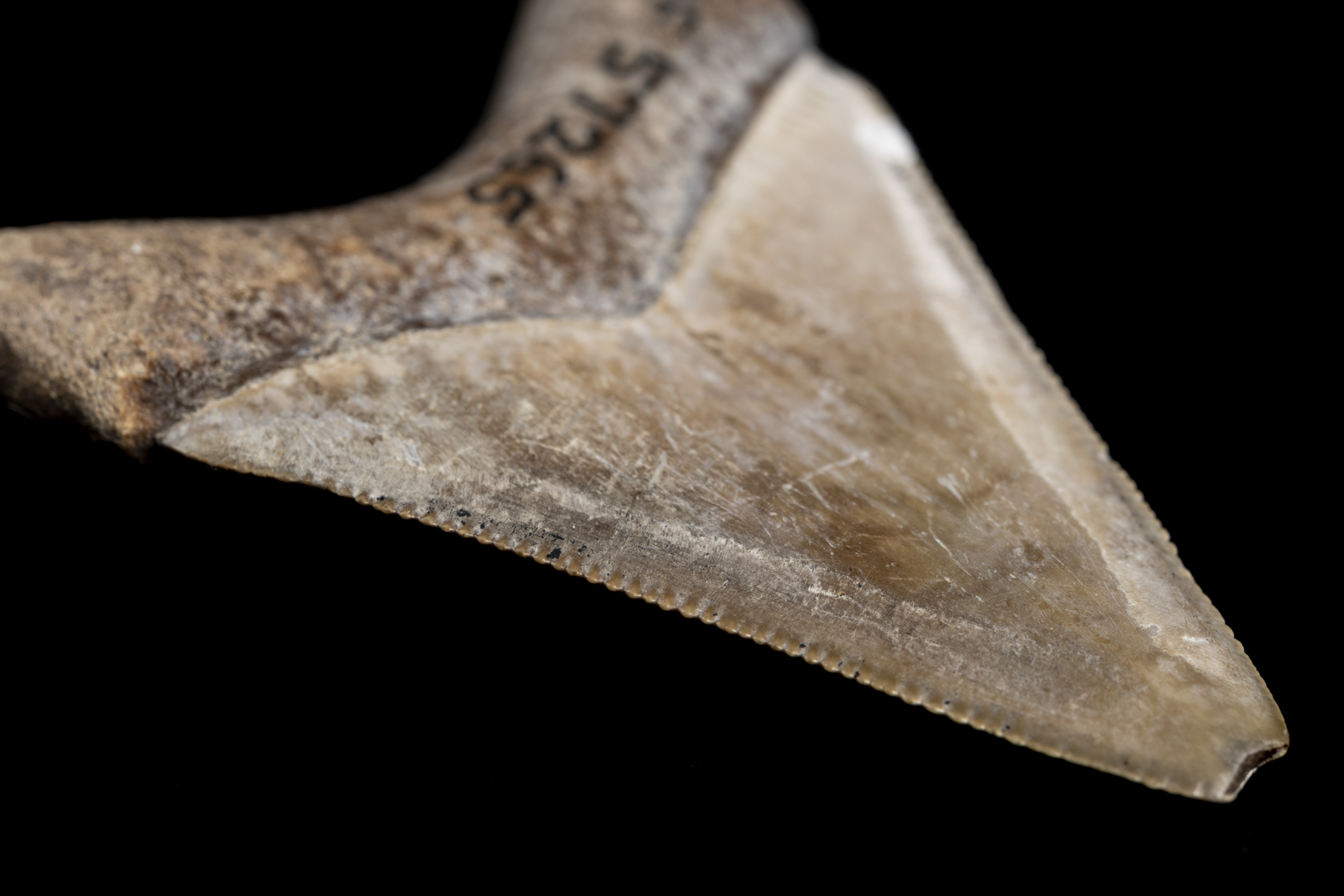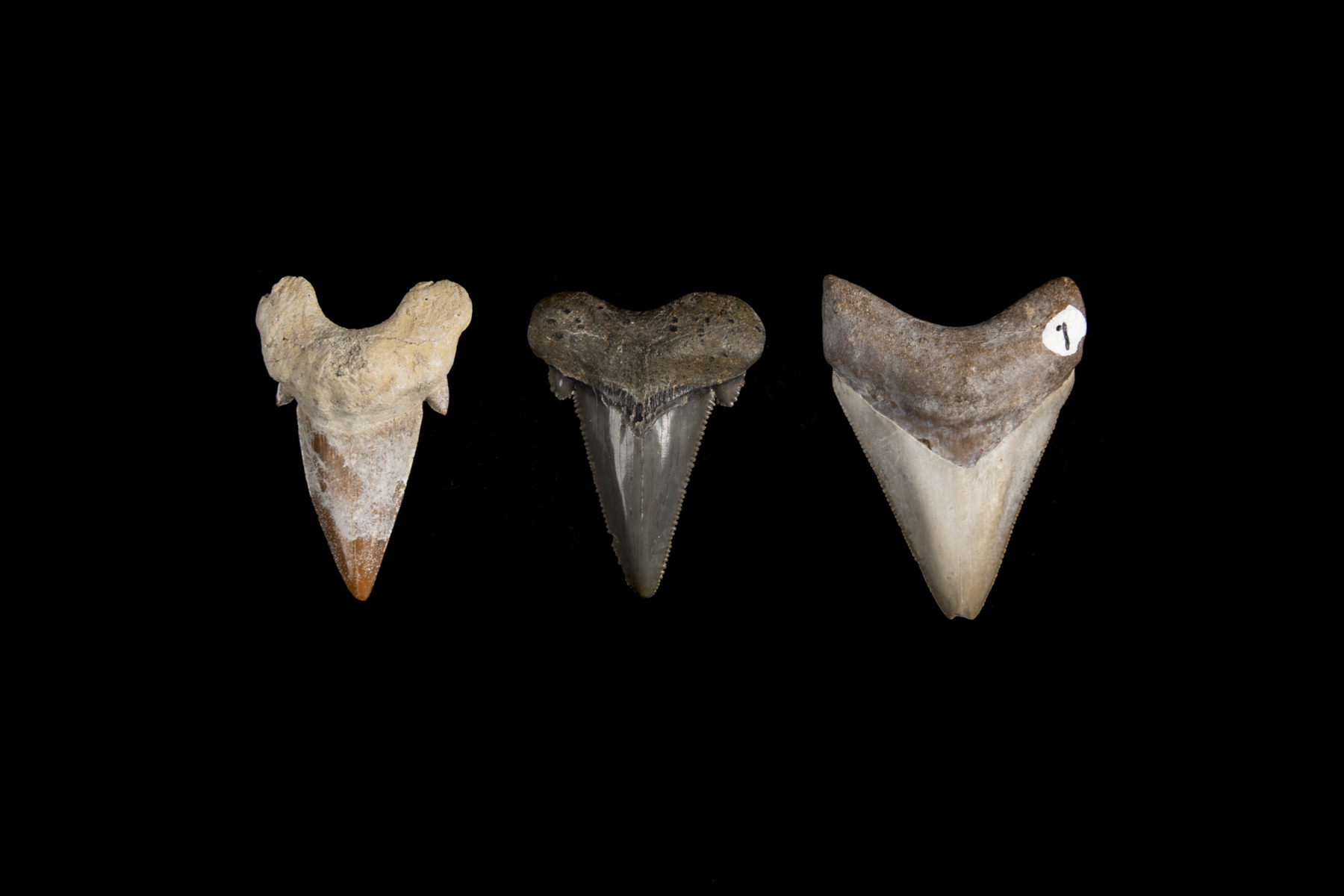The Megalodon Spent Tens of Millions of Years Honing Its Lethal, Knife-Like Teeth

But nature didn't just hand these instant-killing weapons to these prehistoric sharks, called megalodons. Rather, it took millions of years for the teeth to evolve into their final, lethal form, according to a new study published on March 1 in the Journal of Vertebrate Paleontology.
To understand the evolution of megalodon's killer teeth, researchers at the Florida Museum of Natural History carried out some prehistoric dental examinations. They analyzed 359 fossils of teeth found — mostly by amateur fossil collectors — on the Calvert Cliffs, which are located on the shore of the Chesapeake Bay in Maryland. [Photos: These Animals Used to Be Giants]
About 20 million to 7.6 million years ago, this area was part of the ocean, according to a statement from the museum. But now, these dry hills hold scores of fossilized teeth from the two gigantic sharks that swam through the water during that time period: megalodon and its most immediate ancestor, a shark called Carcharocles chubutensis.
Previous research has shown that megalodon's earliest ancestor, called Otodus obliquus, which lived between 60 million to 40 million years ago, had smooth teeth with "cusplets," or mini teeth, that bordered either sides of the main tooth. These three-pronged teeth could have been used like a fork for gripping and tearing into prey, according to the statement.
Fossils from the cliffs revealed that sharks began to lose these cusplets as time went on. The researchers found that about 87 percent of sharks that lived 20 million to 17 million years ago had these cusplets, whereas by 14.5 million years ago, only 33 percent of sharks had them. By 7.6 million years ago, the cusplets had disappeared completely from the fossil record, the study found.
The researchers also found some teeth had tiny bumps, or serrations, around the edges, while others did not.
The transition from three-pronged teeth to broad, flat teeth with uniform serrations "was a very long, drawn-out process, eventually resulting in the perfect cutting tool," lead study author Victor Perez, a post-doctoral student in geology at the Florida Museum of Natural History, said in the statement. "It's not yet clear why this process took millions of years and why [the cusplet] feature was lost."
Get the world’s most fascinating discoveries delivered straight to your inbox.
However, the researchers hypothesize that the transition had something to do with a shift in the way prehistoric sharks hunted, and perhaps even what they ate. While three-pronged teeth could've been helpful for grasping prey such as fast-moving fish or even for preventing food from getting stuck in teeth (even ancient sharks could get gum disease), the cusplet-less, serrated teeth could have been used to immediately strike down prey, Perez said.
The newer, knife-like teeth also would've been helpful in taking down fleshy prey like whales and dolphins, Perez said. Serrated teeth would have allowed for a "single-strike tactic," in which the megalodon bites into its prey and allows it to bleed out. So if instead, the shark continued to grasp prey in its jaws, the whale or dolphin might have thrashed about and injured the shark.
Whatever their purpose, the reason for the transition from three-pronged teeth to serrated teeth is "still a mystery," Perez said. "We're wondering if something was tweaked in the genetic pathway of tooth development."
- Fun Facts About Great White Sharks
- On the Brink: A Gallery of Wild Sharks
- Gallery of Fantastic Fossils
Originally published on Live Science.

Yasemin is a staff writer at Live Science, covering health, neuroscience and biology. Her work has appeared in Scientific American, Science and the San Jose Mercury News. She has a bachelor's degree in biomedical engineering from the University of Connecticut and a graduate certificate in science communication from the University of California, Santa Cruz.



